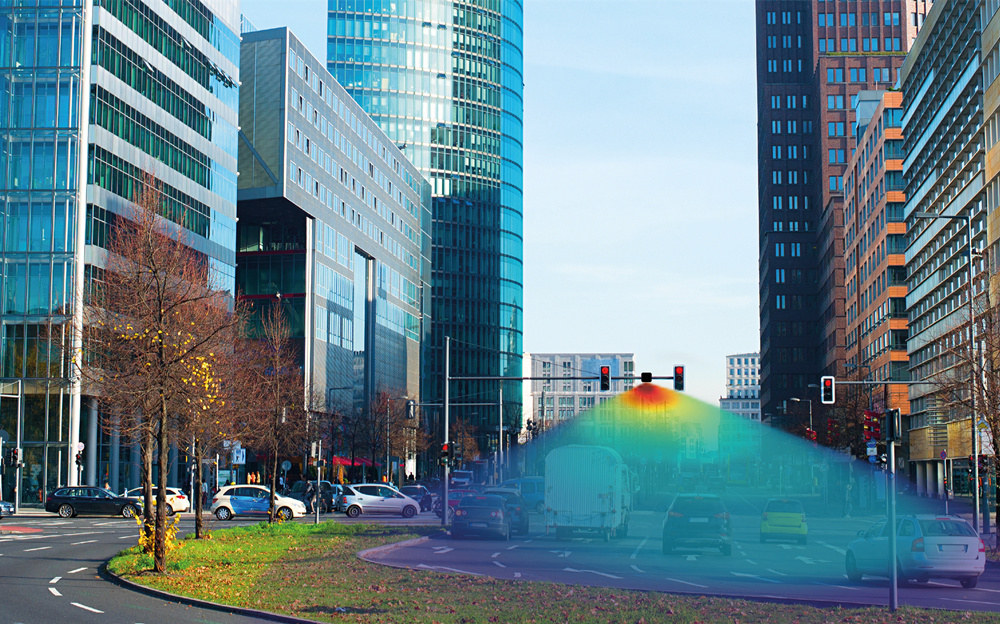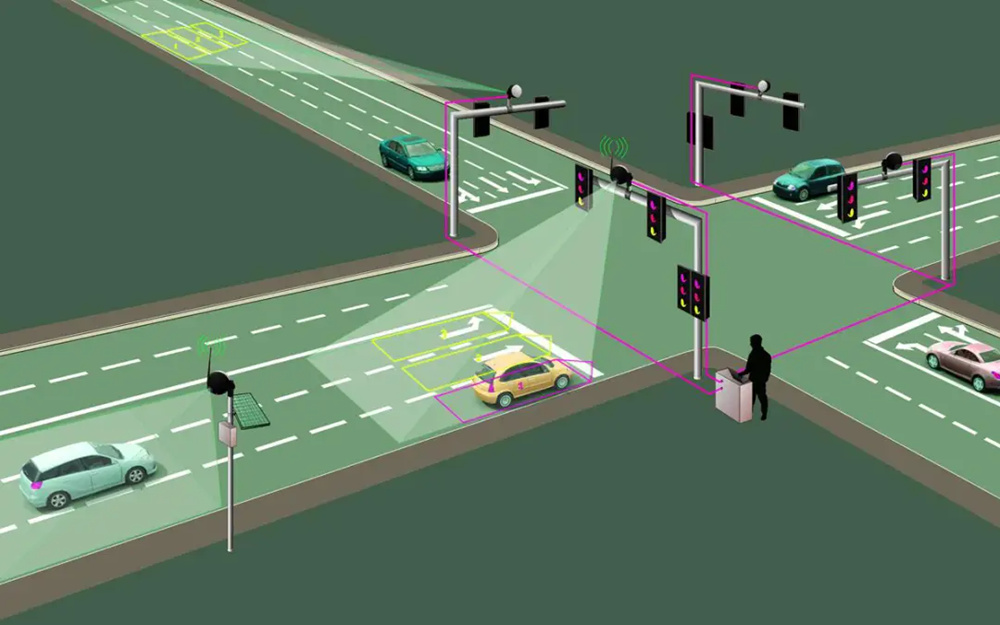Red Light Cameras vs Traffic Sensors: A Comprehensive Guide

Introduction
Traffic management systems rely on a combination of technologies to ensure road safety, optimize traffic flow, and enforce regulations. Two pivotal components in this ecosystem are red light cameras and traffic sensors. While both aim to improve transportation efficiency, they differ significantly in functionality, applications, and underlying technologies. This article delves into their distinctions, use cases, and emerging innovations—particularly focusing on radar-based solutions—to help policymakers, urban planners, and technology providers make informed decisions.

1. Understanding Red Light Cameras
1.1 What Are Red Light Cameras?
Red light cameras are automated systems designed to detect and capture vehicles that violate traffic signals by entering intersections during red phases. These systems typically integrate high-resolution cameras, sensors, and software to issue citations based on visual evidence58.
1.2 How Do They Work?
-
Detection Mechanism: Most red light cameras use inductive loops embedded in the road or radar sensors to detect vehicles approaching intersections5.
-
Image Capture: When a vehicle crosses the stop line during a red signal, the system triggers cameras to capture license plate details and vehicle trajectories8.
-
Data Processing: Advanced systems employ AI to analyze footage, reducing false positives (e.g., emergency vehicles or sudden stops)6.
Challenges:
-
LED Flicker: Traditional cameras struggle with LED traffic lights due to synchronization issues, but modern solutions like LFM (LED Flicker Mitigation) ensure accurate detection7.
-
Privacy Concerns: Critics argue these systems infringe on privacy, though anonymization techniques are increasingly adopted4.
1.3 Applications and Effectiveness
-
Safety Enhancement: Red light cameras reduce intersection collisions by up to 21% in urban areas5.
-
Revenue Generation: Fines from violations fund traffic safety initiatives, though this remains controversial8.
2. Traffic Sensors: Types and Roles
2.1 Overview of Traffic Sensors
Traffic sensors monitor vehicle presence, speed, and density to optimize signal timing and traffic flow. Common types include:
-
Inductive Loops: Detect metal objects via electromagnetic fields; cost-effective but installation-disruptive6.
-
Radar Sensors: Use microwave signals to measure speed and distance, ideal for adaptive traffic control systems9.
-
LiDAR: Offers high-resolution 3D mapping for autonomous vehicles and complex intersections9.
-
Video Sensors: Leverage AI for real-time analysis of traffic patterns and anomalies6.
2.2 Radar-Based Traffic Sensors: A Game Changer
Radar sensors are gaining prominence due to their reliability in adverse weather and low latency. Key advantages include:
-
High Accuracy: Detects speed variations within ±0.1 km/h, critical for speed enforcement zones9.
-
Low Maintenance: Unlike inductive loops, radar requires no road excavation and resists wear10.
-
Integration with Smart Systems: Modern radar sensors feed data to AI-driven platforms for predictive traffic management6.
Case Study:
In China, radar-integrated systems reduced congestion by 35% in pilot smart cities by dynamically adjusting signal timings based on real-time traffic density9.
3. Key Differences Between Red Light Cameras and Traffic Sensors
| Feature | Red Light Cameras | Traffic Sensors |
|---|---|---|
| Primary Purpose | Enforcement of traffic laws | Traffic flow optimization & data collection |
| Technology | Cameras + inductive loops/radar | Radar, LiDAR, inductive loops, video |
| Data Output | Violation evidence (images/video) | Vehicle count, speed, density |
| Installation Cost | High (due to legal compliance) | Moderate (varies by sensor type) |
| Privacy Impact | High (captures identifiable data) | Low (anonymous aggregated data) |
4. Technological Innovations Shaping the Future
4.1 AI and Machine Learning
-
Predictive Analytics: Models like D2-TPred use traffic light data and dynamic interaction graphs to forecast vehicle trajectories, improving collision avoidance systems1.
-
Anomaly Detection: AI identifies erratic driving patterns or congestion hotspots, enabling proactive interventions6.
4.2 Sensor Fusion
Combining radar, LiDAR, and cameras enhances accuracy:
-
Autonomous Vehicles: Multi-sensor systems provide 360° perception, crucial for navigating complex intersections910.
-
Smart Traffic Lights: Systems like Hong Kong’s adaptive signals use real-time radar data to reduce wait times by 64%2.
4.3 Privacy-Preserving Solutions
-
Edge Computing: Process data locally (e.g., traffic sensors with onboard AI) to minimize data transmission7.
-
Synthetic Data: Generate realistic traffic scenarios for training algorithms without compromising privacy6.
5. Choosing the Right Solution for Your Needs
5.1 For Municipalities
-
High Accident Zones: Deploy red light cameras with radar validation to minimize false positives.
-
Congested Areas: Implement radar-based adaptive traffic sensors for dynamic signal control29.
5.2 For Automotive Manufacturers
-
ADAS Integration: Prioritize radar and LiDAR for collision avoidance and traffic sign recognition79.
-
V2X Communication: Ensure sensors comply with emerging vehicle-to-infrastructure standards10.
5.3 Cost-Benefit Analysis
-
Red Light Cameras: ROI hinges on violation rates and public acceptance.
-
Traffic Sensors: Long-term savings from reduced congestion and fuel consumption justify upfront costs6.
6. Regulatory and Ethical Considerations
-
Legal Compliance: Ensure systems adhere to local laws (e.g., GDPR for data handling in the EU)8.
-
Transparency: Publicly disclose camera locations and data usage policies to build trust4.
-
Bias Mitigation: Audit AI algorithms to prevent disproportionate enforcement in marginalized communities6.
7. The Road Ahead: Trends to Watch
-
5G Connectivity: Enable real-time data sharing between sensors, cameras, and vehicles9.
-
Autonomous Intersections: LiDAR-equipped traffic lights will guide self-driving cars with millisecond precision9.
-
Sustainability: Solar-powered sensors and low-energy radar systems will dominate green urban projects10.
Conclusion
Red light cameras and traffic sensors serve distinct yet complementary roles in modern traffic ecosystems. While cameras enforce compliance, sensors enable smarter, data-driven management. Radar-based solutions, in particular, are revolutionizing both domains with their accuracy and adaptability. As cities embrace AI and IoT, integrating these technologies will be key to building safer, more efficient transportation networks.
Explore our radar-based traffic solutions to future-proof your infrastructure.
